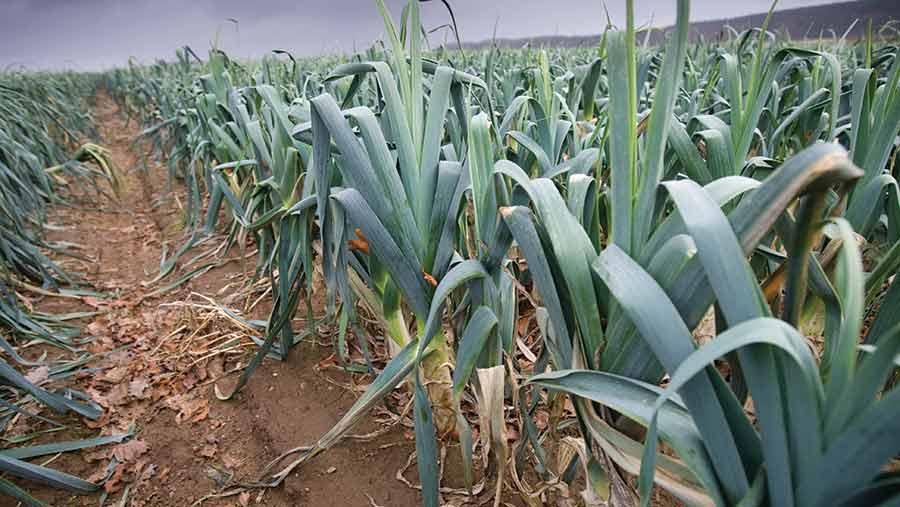Leek, a versatile and flavorful vegetable, is gaining popularity in India for its culinary uses and nutritional value. Cultivating leeks can be rewarding for Indian farmers due to their adaptability and market demand.
In this guest post, we will delve into the cultivation practices, various leek varieties, the ideal sowing time, and strategies to maximise yields when cultivating leeks in India. Additionally, we will touch upon topics related to tractor prices and considerations, including Eicher tractor models for agricultural efficiency.
Varieties of Leeks
Before delving into cultivation practices, it’s essential to understand the varieties of leeks suitable for Indian conditions. While there are several varieties worldwide, the following are well-suited for Indian climates:
1. American Flag Leek (Allium ampeloprasum var. porrum):
This variety is commonly grown in India and is known for its mild, onion-like flavour. It’s suitable for a wide range of climates and soil types.
2. Elephant Leek:
As the name suggests, this variety produces large, thick stems with a milder taste than other leek varieties. It’s ideal for Indian regions with varying temperatures.
3. Prizetaker Leek:
Prizetaker leeks are known for their enormous size and excellent flavour. They thrive in cooler climates, making them suitable for higher-altitude regions in India.
Cultivation Practices
Successful leek cultivation in India involves the following key practices:
1. Soil Preparation:
Leeks thrive in well-draining, fertile soil with a pH level between 6.0 and 7.0. Prepare the soil by adding organic matter, such as compost or well-rotted manure.
2. Sowing Leek Seeds:
Leeks can be grown from seeds or transplants. If starting from sources, sow them in seed trays or pots indoors about 8-10 weeks before the last expected frost date. Transplant the seedlings when they are around 6-8 inches tall and have at least two leaves.
3. Spacing:
Proper spacing is crucial for leeks to grow successfully. Plant them in rows with a 12-18 inches distance between plants and 24-30 inches between rows.
4. Watering:
Leeks require consistent moisture but are sensitive to waterlogged conditions. Water deeply but ensure good drainage to prevent rot. Drip irrigation or soaker hoses work well for maintaining even moisture levels.
5. Mulching:
Apply a layer of mulch to retain soil moisture, suppress weeds, and keep the roots cool. Straw or compost make excellent mulch choices.
6. Fertilisation:
Leeks benefit from regular, balanced fertilisation. Apply a slow-release fertiliser or top-dress with compost every 4-6 weeks during the growing season.
7. Hilling or Blanching:
To achieve the characteristic long, white stems of leeks, hill or mound soil around the base of the plants as they grow. This blanching process prevents sunlight from reaching the stems, keeping them tender and mild in flavour.
8. Pest and Disease Management:
Look for common pests like aphids, onion flies, and thrips. Neem oil or insecticidal soap can help control these pests. Disease prevention includes crop rotation and ensuring good air circulation.
Optimal Sowing Time
The choice of sowing time plays a critical role in leek cultivation. In India, the ideal time for sowing leek seeds varies depending on the region and climate:
1. Winter-Sowing Regions:
In the northern parts of India and regions with a temperate climate, sow leek seeds from late summer to early autumn. This allows the plants to be established before the onset of winter.
2. Tropical Regions:
In southern and tropical regions of India, leeks can be sown during the year’s cooler months, typically from November to February. Avoid sowing during the hot summer months.
3. Hill Stations:
High-altitude regions and hill stations can extend the sowing period into early spring when temperatures are still cool.
High-Yield Strategies
To achieve high yields of leeks, consider the following strategies:
1. Proper Spacing:
Adequate spacing between plants allows them to develop larger bulbs. Crowding can lead to smaller, less desirable leeks.
2. Consistent Moisture:
Ensure consistent moisture levels throughout the growing season. Drought stress can result in reduced yields and smaller leeks.
3. Crop Rotation:
Practice crop rotation to prevent soil-borne diseases and maintain soil health.
4. Blanching:
Properly blanching leeks by hilling up soil around the stems improves appearance, flavour, and marketability.
5. Pest and Disease Management:
Vigilant pest and disease management will help protect your crop from damage and yield loss.
6. Harvesting at the Right Time:
Harvest leeks when they reach the desired size, usually around 1 to 1.5 inches in diameter. Overgrown leeks may become tough.
7. Market Knowledge:
Understand the local market demand for leeks and plan your production accordingly. Building relationships with local markets or restaurants can help ensure a steady income.
Conclusion
Leek cultivation in India presents a promising opportunity for small-scale farmers. By making informed choices regarding varieties, cultivation practices, optimal sowing times, and yield-boosting strategies, farmers can embark on a successful and rewarding journey. Additionally, considering factors such as tractor price and reliable options like Eicher Tractor can further enhance overall efficiency in the farming process.
Whether you’re a seasoned farmer or a newcomer to agriculture, leeks can find a place in your crop rotation and contribute to your income and your community’s nutritional diversity.


